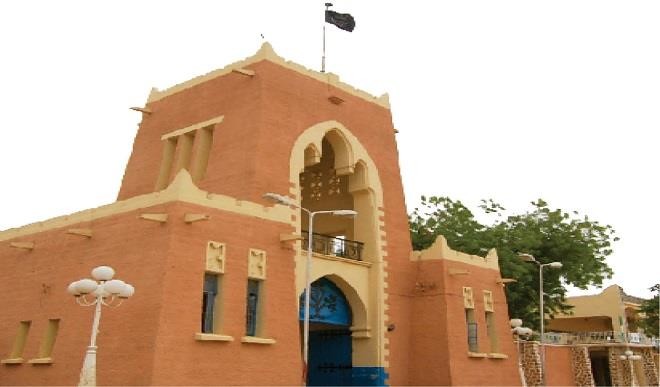
Kano is among the few states in Nigeria that are blessed with historical and heritage sites. Places like Kano Zoo, Gidan Makama, Emir’s palace, Kurmi market, Kano City walls, Kano City gates and Dala hills are among the many historic sites that always attract visitors and make them feel great while in the state.
Emir’s palace
This seat of majesty is located at the southern margin of the city wall. It was built during the reign of Emir Muhammadu Rumfa (1463-1509). The building started in 1479 and was completed in 1482. Up to now, the palace houses the Emir, members of his immediate family and courtiers. It has a central gate called Kofar Kudu at the south and two other gates Fatalwa and Kwaru in the north bordering the Central mosque. The emir uses several palace rooms known as Fada which include Soron Ingila and Rumfar kasa among others. The palace receives thousands of visitors, among them heads of states and governments from the four corners of the world. The palace has maintained its values and heritage, and is undoubtedly the biggest palace in Nigeria with major and minor outlets.
Kano City gates
Every person going into the city of Kano must do so via one of the 15 city gates. However, age, urbanization and climate affected majority of these gates and consequently replaced with modern ones.
Some of the gates are: Sabuwar Kofa; Kofar Dan Agundi; Kofar Na’isa; Kofar Gadon Kaya; Kofar Kabuga; Kofar Dukawuya; Kofar Ruwa; Kofar Mazugal; Kofar Wambai; Kofar Mata; Kofar Nassarawa; Kofar Waika and Kofar Dawanau.
Jifatu/Sahad stores
Visitors who are interested in shopping have nothing to worry about because Jifatu and Sahad stores were always available and ready to serve them better. The two modern stores are located within the state metropolis. Both operate everyday including weekends.
Gidan Makama
Gidan Makama Museum was constructed by Emir of Kano, Sarki Muhammadu Rumfa. The building originally served as Kano emir’s palace before Rumfa built and moved to the present palace Gidan Rumfa in the 15th Century.
The structure was later divided into three parts; a museum supervised by the Department of Antiquities, a primary school and a residential building. Gidan Makama is now under the Management of National Commission of Museum and Monuments.
The museum is preserving collections of arts, crafts and other historical items about Kano. It is because of its historical importance that the federal government took over the control of the building and made it a National Monument. Presently, it has 11 galleries with each having its focus. The main entrance is called Zaure which contains displays of traditional materials, city walls and maps of Kano, the history of statehood, Kano in the 19th century, the civil war, economy, industry and music.
Next to Zaure is an open space largely for stage performances for the famous Koroso dancers and drama group.
Dala Hills
Dala Hills is a site of an ancient settlement dating back to the 10th Century. It is the source of the evolution of Kano City and a vital reference point in the development of Hausa Kingdoms, societies and cultures which greatly influenced the early indigenous civilizations in the savannah zone of the Western African sub region.
The hill was the first settlement in Kano city and it formed the nucleus for the peopling of the rest of the city and was the foundation of its economic and political development.
This residual hill is located at the heart of the old city. It was the centre of spirituality, power and authority of the original settlers of Kano. It also offered maximum security to early people who were terrorized by human and animal foes. Dala Hills is believed to be the host of their deity, Tsumburbura and their high priest, Barbushe.
Kano Zoo
Kano Zoological Garden popularly called Gidan Zoo was established in 1972 by the then Governor of the state, late Alhaji Audu Bako. The objectives for establishing the garden was to bring to Kano people different specimen of wildlife with particular emphasis on animals which are not available in the country at that time.
However, the Zoo has today become a source of joy not only to Kano residents but to visitors that are willing to see animals which they have never seen physically in their lives. Tourists from all over the world come to the zoo for both tourism and research purposes. At present, the Zoo has hundreds of different specimen of wildlife for visitors to see.
Kano City walls
The Kano city walls were built in order to provide security to the growing population. The foundation for the construction was laid by Sarki Gijimasu (1095 -1134) and was completed in the middle of 14th Century during the reign of Zamnagawa. In the 16th Century, the walls were further extended to their present position. Ancient Kano city walls and associated sites are places of spiritual, historical and cultural significance. The site bear testimony to local craftsmanship and ingenuity as is evidenced in the materials used for the construction of the walls and palace.

 Join Daily Trust WhatsApp Community For Quick Access To News and Happenings Around You.
Join Daily Trust WhatsApp Community For Quick Access To News and Happenings Around You.


